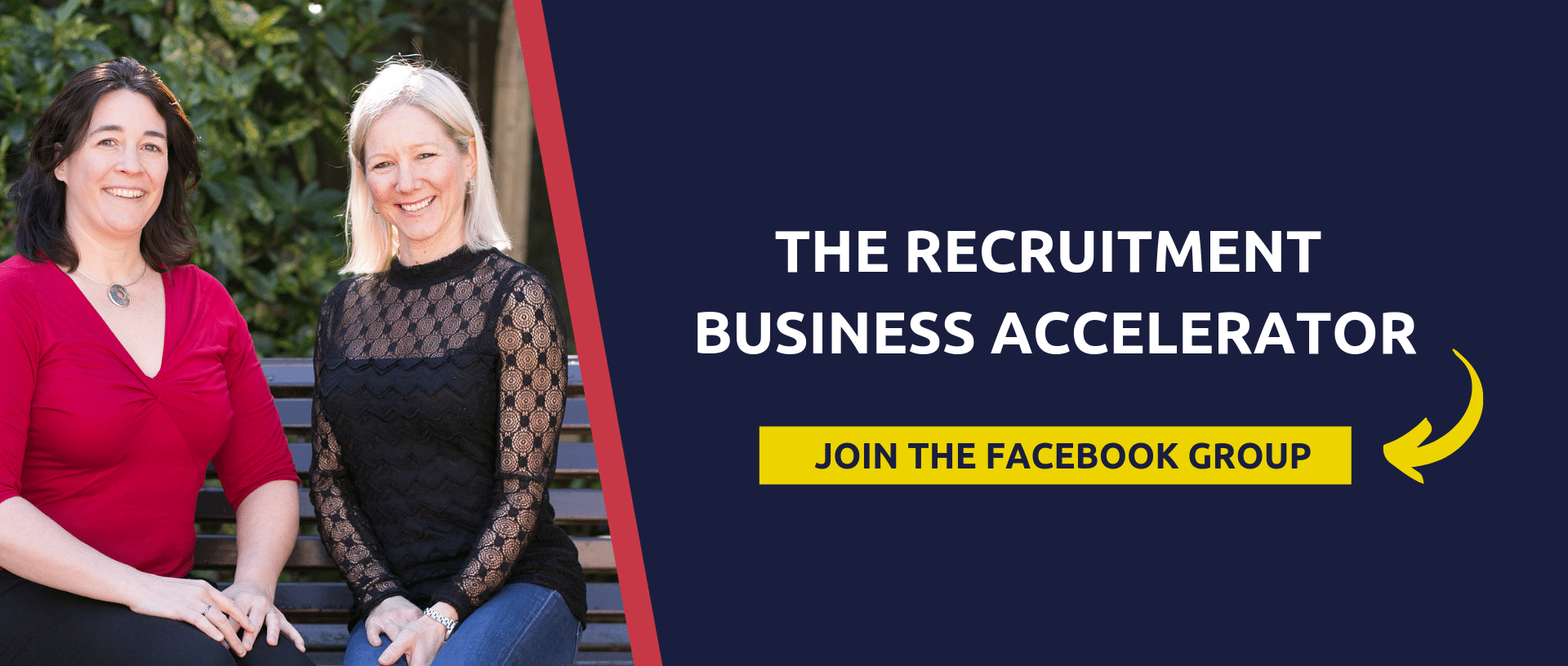Today in our Recruitment Hero Series at Centredexcellence, I share Ian Woodthorpe’s success story.
Ian is the founder and MD of Gap Talent, whom I have known for many years, and about eight years ago, he contacted Nicky and me to help him deliver his growth plan. Working with him and the team to scale Gap Talent to a global talent solutions provider has been an absolute delight.
We wanted to Share Ian and his business partner Tony’s story because when they started working with us, they were below a million in revenue and have kept growing consistently, doubling their profit each year as their business continued to evolve.
I asked Ian several critical questions about his growth which I think you will find incredibly revealing.
Tell Us More About Gap Talent and What The Business Does?
I was born to British parents, and as a family, we came over to Zimbabwe, and I have been in South Africa for over twenty-five years. I trained as an accountant and originally started working in the banking system, which I soon discovered wasn’t for me, so I moved into recruitment.
Gap focus on international relocation recruitment for all the large accounting and professional service firms like PwC, KPMG and the top ten accounting firms.
We move people from talent-rich countries to talent-poor countries.
So when talent runs dry in the local markets, we import talent from abroad into that country.
When We First Met, Where Was The Business?
To be honest bumbling along! We would do well then the business would dry up. We would find a great consultant, and then they would leave.
A friend of mine who worked at Bain Capitol and bought and sold businesses described our business as a lifestyle business. It wasn’t that we took time off and didn’t work, far from it. There wasn’t a proper process or growth plan in place, so we bounced up and down all the time.
I remember thinking, how do we fix this and that is when we came to Centredexcellence.
We were very consultant dependent. There were one or two people for whom we were bending over backwards, and they were getting greater and greater influence with our clients.
It was inevitable that they would start their own show, which is what two of them did.
I didn’t know where the business would be in a year, let alone five years. I was seeing where we could go.
The analogy I use is like your pet is driven to look for food, And you know, some years we got fat, and some years, we didn’t.
We wanted consistent growth and didn’t know how to do that.
We knew how to get revenue and recruit but didn’t know how to grow and scale.
I would see these wizards that would float companies within three years and think, how do they do that?
I wanted some answers and was willing to learn. We had a non-exec for a while, though, that didn’t work out as we wanted.
Though RockIT did, It had the direction and process we needed.
Re-Flect, Re-Set and Re-New Vs Living In THE GAP
Download your 2020 Business Planning Worksheet for Recruiters.

What Did You Implement When You First Joined RockIt?
First of all, we took it seriously. We prepared for every meeting and started analysing what we were doing, assessing data, and deciding on our avatar and our team values with the team. The insights began to come that we could implement.
We decided on three values; ambitious professional and commitment.
We use them to this day and measure behaviour and results around that.
If people aren’t arriving on time, we’ll say that’s not demonstrating commitment. If people aren’t dressed correctly for meetings, it’s not professional.
We started using talent dynamics as a profiling tool which helped us. I also became more aware of the limiting beliefs, language, and messaging and their impact on results.
A huge game-changer was understanding the different recruitment models and adopting the 180 model. It was about being committed to looking at what was and wasn’t working and making changes.
Tell Us More About How You Changed Your Service Model?
Deciding on the right avatar model for us based on where our revenues were coming from was huge. It gave us a focus every day.
If I were with a client that wasn’t our avatar, you’d be aware that I shouldn’t be spending my time with this person.
You don’t necessarily drop them. Still, you start developing an awareness of where I should focus my energy and an appreciation that there are only so many hours in a day. There’s only so much energy you have. And the avatar client did help provide us with focus.
We are specialist recruiters, and yet we would get distracted by the bright shiny object of a new desk, and gradually we realised this wasn’t going to help us grow.
Over time we focused on our areas of strength and our avatar model and switched to the 180 model, which made it easier to specialise.
At the same time, we developed a much higher self-awareness of a business and the concept of return on time; where should you focus your time?
This took me a while to learn because I thought it was ok if you were getting revenue from your time. And if you made a placement, happy days.
Now I realise not all time is equal, and your ROI can change according to the activity. Awareness of this has helped us grow from five people to thirty years with offices in various countries.
We are learning every day, have a structure and process, and plan for where we want to be in the next few years.
Moving to Retained Projects?
It was a mindset shift. In the past, if we saw an opportunity to do bulk recruitment and projects, we would take them.
This is where our clients will interview 50 people, and we have KPIs. We expect at these 25 to be offered then probably 20 to accept.
Then the penny dropped that we should be selling more of these projects. From there, we started focusing on, where are the big clients who want these projects.
It took time and dogged determination to make it work. One of our non-financial goals was to land a meeting with a top big four firm in the UK, and after several years it happened.
We then started to think we could do this, and now we only pitch projects, which was a huge shift and scary. Yet when I look back, once you’ve done a project for them, they trust you, then you do the next one, and they trust you, and it snowballs from there.
And you do sometimes need a bit of a tailwind. I mean, you, you, sometimes it is a bit of luck. Um, there, there is a tailwind, there’s, there’s an industry, there’s a talent shortage. Uh, Brexit has helped our business. Um, I know everyone is negative about Brexit, but in the past, they just relied on talent to come from Europe, and now they have to source talent globally and use the work permit process. Working with both of you has shifted our results.
Tell Us More About Moving From The 360 Model to The 180 Model.
The model we had previously was the 360 model. We relied on people who could go and engage with the clients, find their talent, a true self starter.
The analogy I use is placing a fish in a fish tank. Some don’t survive, while others grow so big that they smash out of the tank and start up on their own.
It is a challenging model to run consistently. We decided to use the 180 model and play to people’s strengths through meeting you as we understood the skillset you need for different roles.
If you rely on 360 recruiters, you will have to find the needles in the haystack. They will eventually realise they are needles in the haystack, which means you will struggle to retain those people and your business isn’t scalable.
The skill sets are so different; your sales ability versus your delivery ability are completely different.
The 180 model was a big eureka moment, and it helped us to play to people’s strengths.
It helped Tony, a very good salesperson, go and meet with people without worrying about scratching on LinkedIn, looking for talent.
It enabled people who weren’t necessarily the strongest sales extroverts to develop client and candidate relationships. It is a more sensible, scalable model in our experience.
We use different language to explain what we do and stand out in the market. We aren’t about making sales; we are about changing lives.
New team members, clients, and candidates we work with buy into this. It’s an interesting point because many of our clients have big internal recruitment teams.
So, what we’ve spent a lot of time articulating is that what we do is different. It requires a different process. It requires longer aftercare.
We explain that when it comes to what we can deliver, it is different.
10X YOUR TEAM’S OUTPUT
“Your team does a lot of work – but they could do better. “

With The Changes and Growth, You Have Had, What Changes Have You Made In Your Management and Leadership Style?
I’ve developed a higher sense of self-awareness, and talent dynamics has helped me appreciate my strengths.
I am working on not being a micromanager which I used to be when the business was small.
The best part is if you spend your time and energy on a process and empower people, it’s unbelievable what they can do. We have an office in South Africa, Ireland, and here in the UK, and there are about 10 or 12 in each, and they are empowered.
In a personal context, I focus on what I can control and continually develop myself there.
Being The Success, You Are Now and Looking Back What Would You Have Done Earlier?
I would have started working on this earlier and developed a sense of self-awareness and what I was good at and what I’m not good at.
When you run your own small business, people don’t give you feedback about your positive or negative language or how you are doing things.
I would have added more deadlines and goals like, by five years, we need to have done this. I would have developed my self-awareness.
What Would Be Your Top 3 Success Tips For Scaling?
The first one is what you taught me; Version one is better than version none. So, if you’re thinking, we need a process and a policy, but people know what they do.
So, it’s how is putting this into a word document going to help because they know what to do anyway. And when it helps, when that person leaves on the day, you don’t expect it because you’re on holiday. And then, because you have your version one, you can pass one and show them exactly what the job is.
All without having to sit every day and train them.
Next is working on the business rather than in it.
This is how we came to things like changing lives. That’s how you start to move forward, even if it’s an hour that you set aside to think and plan.
Look at the bigger questions about why people hire or work for us.
I would also say move out of your comfort zone, start implementing, and focus on continuous learning and improvement.
What Next?
Ian was a huge implementor of all the strategies we teach in the Rockit programme and consequently achieved huge results.
If you would like to discuss how we can help you build your recruitment or executive search business to seven figures and beyond, schedule a free profit Accelerator Session with one of our Scale Specialists.
We will help you clarify exactly what you need to do to double your sales and fill rates and increase your fees while you build a business that runs on autopilot.
Warm Regards
Nicky and Katy








